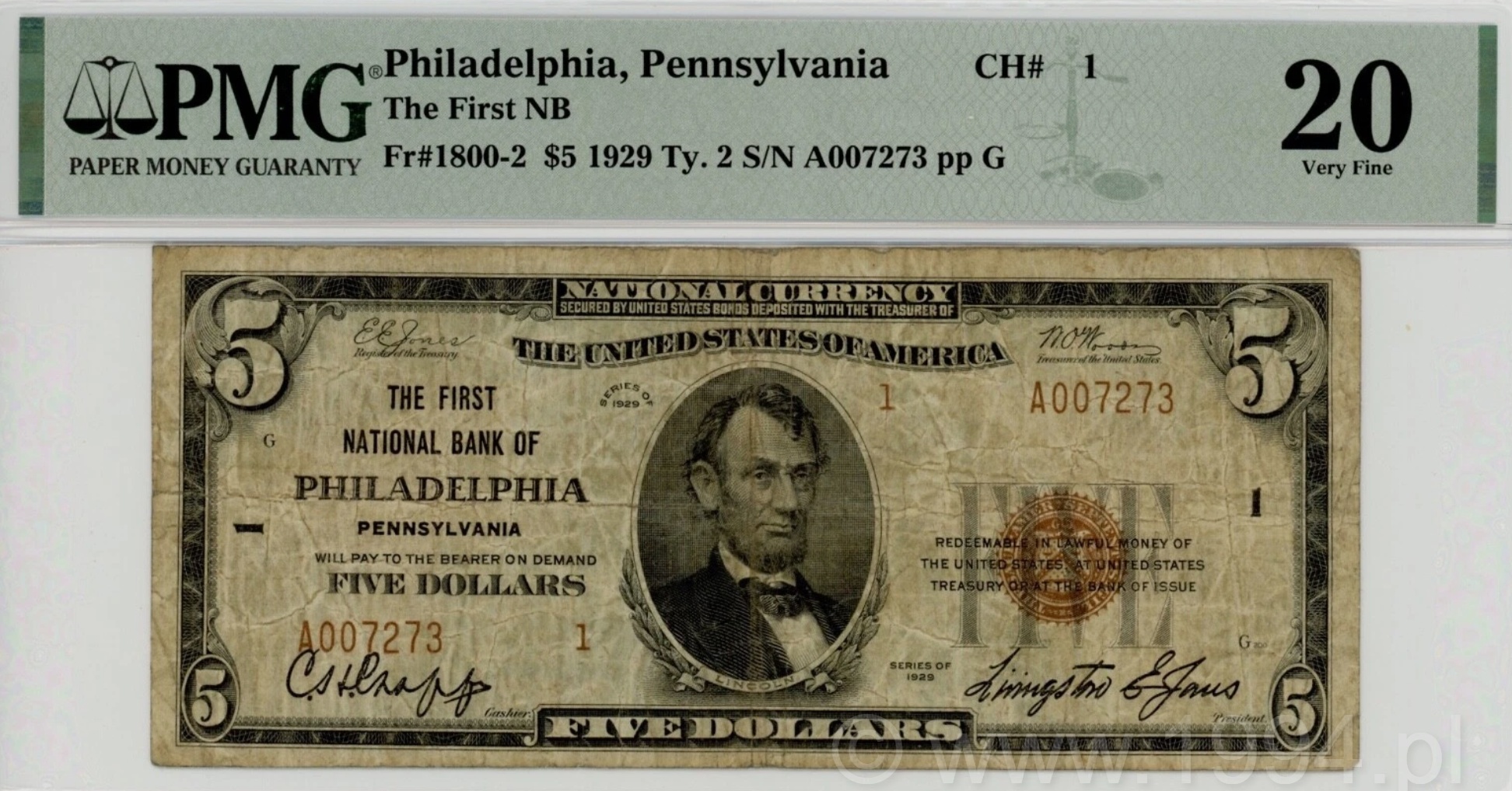Description and research notes
Issued by The First National Bank of Philadelphia under Charter 1 — the very first federal national bank charter granted following the National Banking Act of 1863 — this five-dollar note represents the closing generation of National Currency printed before the system ended in the 1930s.
Charter 1 defined the origin of federally chartered banking in the United States, anchoring Philadelphia’s financial network through multiple eras: Civil War greenbacks, Gilded Age expansion, and the economic transitions of the early twentieth century. Its officers, including C. H. Chaffee as cashier and Livingston E. Jones as president on this series, carried the institution’s legacy into the small-size note period.
This example is a Series of 1929 Type 2 five-dollar issue, distinguished from the earlier Type 1 by the addition of the bank’s charter number printed twice in brown ink within the Treasury seal and serial number fields. The central portrait of Abraham Lincoln and the black Treasury overprint tie the note’s aesthetic to the concurrent Federal Reserve designs while retaining the local bank title and signatures that define National Bank Notes. Friedberg designates this issue as 1800-2.
Certified PMG 20 Very Fine, this note captures the culmination of the National Banking era—when the very first chartered bank in the nation still circulated its own legally backed paper money, nearly seventy years after the system began. Each surviving piece from Charter 1 marks a direct link to the founding structure of American national banking.
